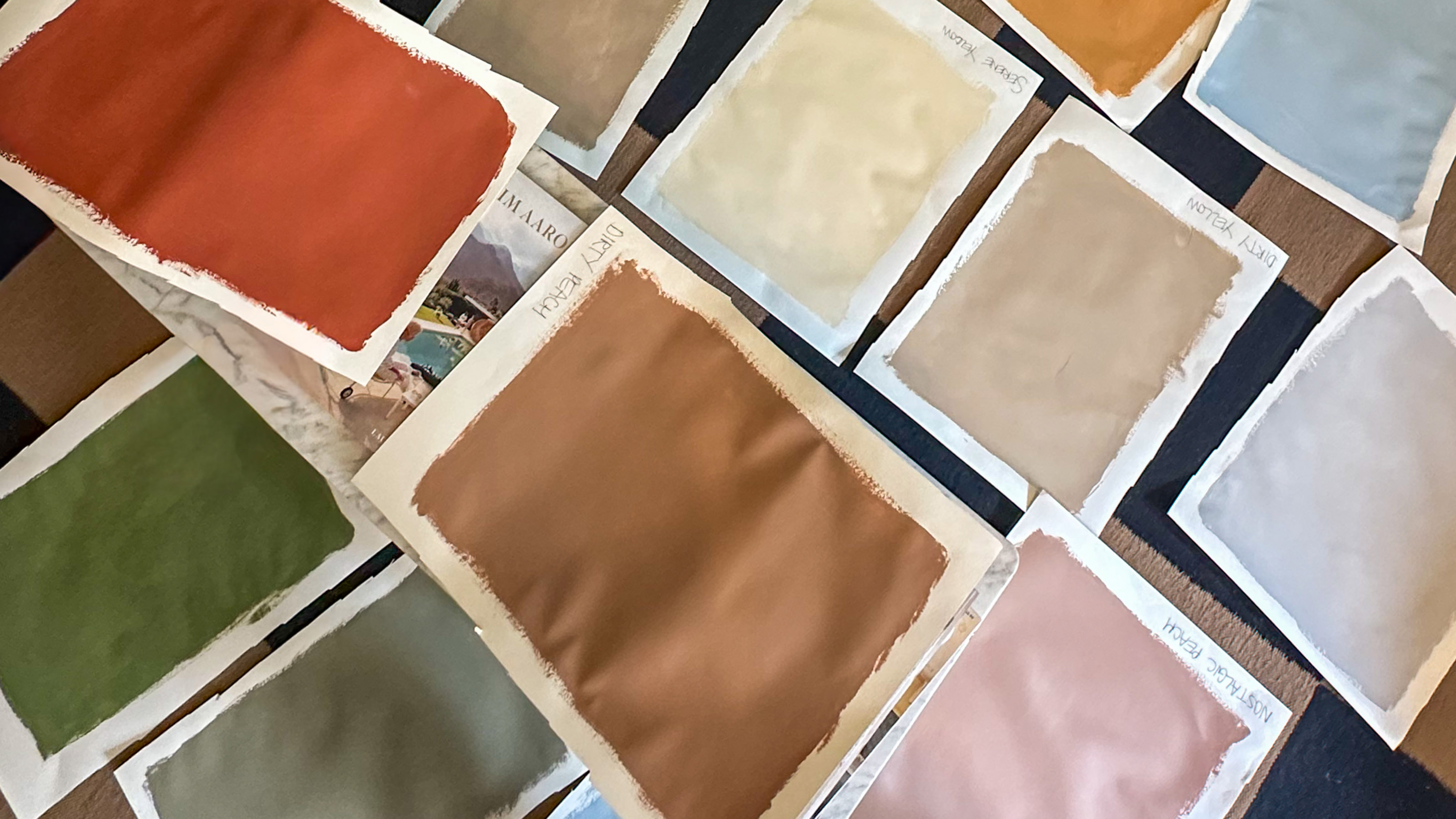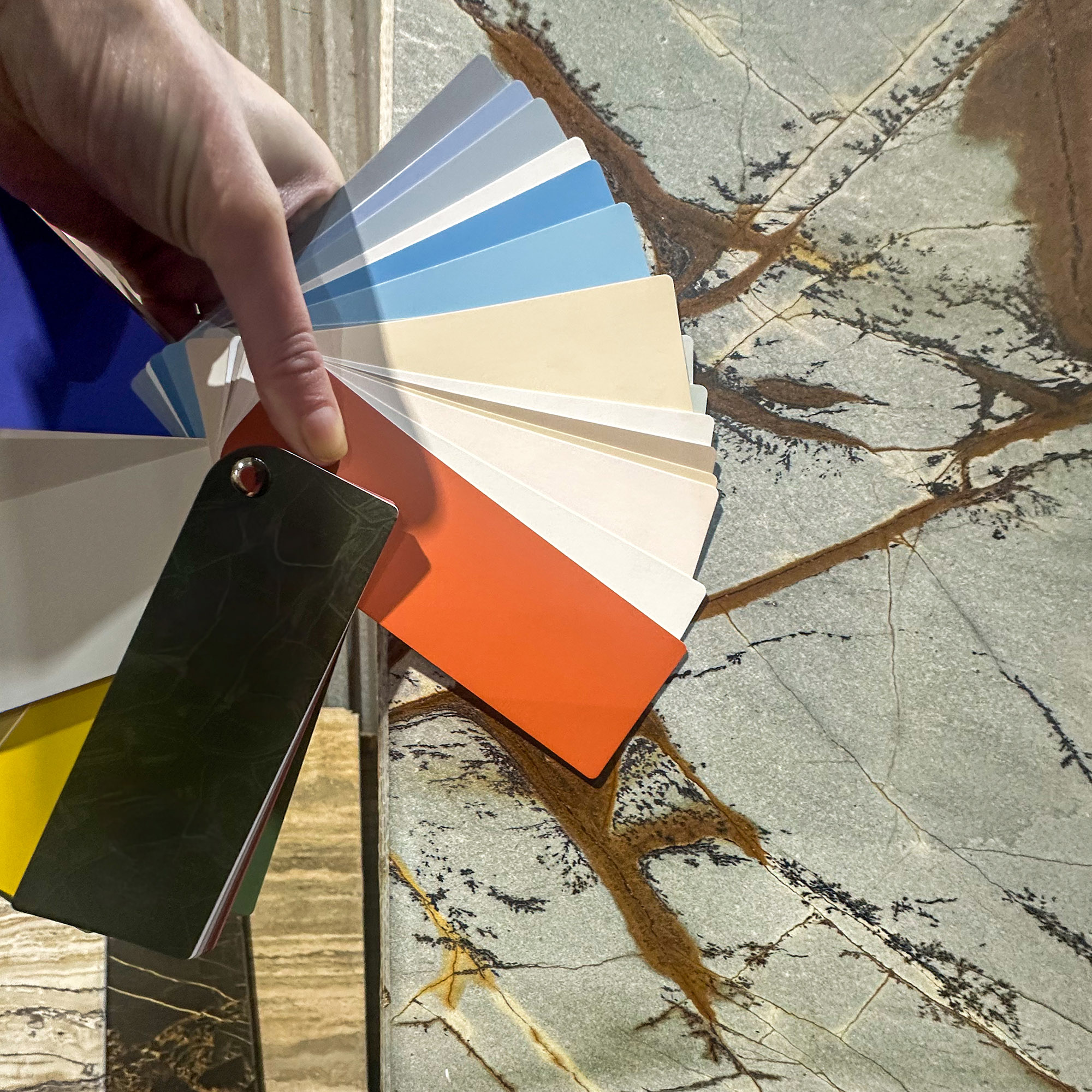Organisation, clarity, and focus will make shopping for your home easier, smarter, and less stressful – this is how I avoid overwhelm
Getting started finding your fantastic things that are Everything



Strategist and content creator Francesca Swan is one of Ideal Home's new Open House contributors, sharing her thoughts on the concept of 'Everything' and what makes a home special to you. See the rest of her articles here.
Imagine the scene: You’re standing in the middle of IKEA, the tape measure is in the drawer at home, and you've just realised you actually don’t really know what you’re looking for.
There is a strong feeling of chaos building, kids are screaming all around you (or maybe it’s the voices in your head?!), and you know whatever you buy in desperation will be back in the long queue for the refund desk in the very near future.
We’ve all been there and it happens easily. When we don’t know what we need, we’re setting ourselves up to fail from the start.
Last time I touched on how finding those Everything pieces — items that spark an emotional feeling of connection and confidence that a piece belongs to you — should be an Everything experience. Pleasurable, not painful.
But we all know that isn’t always the case.
Over the coming weeks, I’m going to share my hard-learned hacks on how to shop smartly and make them work hardest for you.
Sign up to our newsletter for style inspiration, real homes, project and garden advice and shopping know-how
Small caveat; I am not an interior designer, but I am a good shopper. I’ve worked in retail for years and shopped A LOT (too much in fact).
This is my tried and tested layman’s guide of lessons learnt - good and bad. Some of this may be obvious to you; other parts may spark new ways of thinking.
And if you’ve got ideas of your own, please share them. We’re not gatekeeping here – the more we swap notes, the better.
The aim? Organisation, clarity, and focus that makes shopping easier, smarter, and less stressful.
We want to perfect your Secret Sourcing SauceTM. The things that matter most to you before you start searching. So, shopping for those Everything pieces is something you enjoy, not endure.
The Stresses and Pinch Points

Before we dive into the fun of sourcing our treasures, we need a primer - the personal decision-making criteria that shape how you shop.
The challenges and stresses we’re trying to overcome - the ingredients that make your Secret Sourcing SauceTM super tasty and perfect for your palate.
My Instagram community has been brilliant in contributing their thoughts to my own, and these are the big themes…
Firstly, the overwhelm is real, especially if you’re new to it. I’m on my second renovation and I’m still learning.
Sometimes you don’t even know what you want. You just know there’s a gap, and you’re not sure how to fill it.
Then, there’s just so much to choose from. Where do you start? Faced with endless options, how do you narrow them down? The sheer volume of choice can feel paralysing.
And on the flip side, what if you have something totally fixed in your mind but you can’t find it anywhere, or in the colour you need?
How are you making decisions? Shopping for yourself means full autonomy, but shopping with a partner or family adds complexity. I’ve had (and witnessed) more than a few arguments in showrooms. Needless to say, compromise, diplomacy, and clarity matter when multiple tastes are involved; things that may be in short supply after hours arguing over bedlinen.
Another big one: how is it really going to look in your home? Especially with bigger purchases, how do you give yourself comfort and confidence that you’re making the right call?
Time pressures come in two flavours. One is simply finding time to shop at all. The other is deadlines: a family visit, Christmas around the corner, the pressure to have things ready NOW.
Throw in the joy of budget and costs - an almost universal pinch point. How do you prioritise and plan your budget to get the best results, then stay on top of it? Not to mention avoiding hidden costs or taxes?
And finally: expensive tastes but limited budgets. This one I can heavily relate to. I’m guaranteed to blindly laser-focus straight to the most expensive option anywhere - shop, restaurant, hotel, anything. It’s a dark and dubious gift and the bane of my other half’s life and bank balance.
But there are also smart ways to source designer investment buys on a budget - something I’ll cover soon when we get to online marketplaces.
The key is this: define your mandatories before you leave the house. Clarity makes things easier and more focused. It pays to get organised. It pays to be smart and strategic.
Start with your Shopping List, Space Planning and Specifications
Inspiration trips are wonderful, but if you’re actually going out to buy, a clear plan is your best friend.
Write down not just what you want, but why. For example, dining chairs: maybe they need to be stackable, wipe-clean, and comfortable for long dinners? That narrows the field.
For bigger investments - a kitchen or bathroom, for example - space planning is fundamental.
Whether you’re doing a little refresh or starting from scratch, step back and think carefully about what you need and want.
Visualise your average day, then imagine it as perfectly streamlined and stress-free as possible and how the space works to make that happen. Think about all those little hidden hurdles and stress points that make life a little more annoying than it needs to be.
What’s worked in your current setup? What hasn’t? Imagine a space to suit the life you want, getting rid of those hassles for good.
Write down a list of absolute must haves, not forgetting that what you DON’T want is just as important as what you do.
Another important step before starting is to be diligent in getting your measurements and references straight.
Take time to plan how your room dimensions work for what you need. Don’t head out shopping without this - it saves time, stress and frustration later.
There are brilliant online tools available: Reno is a fabulous digital platform to build your floor plans from scratch, add moodboards and visualise all the way through to furniture and colour. You can also share this with retailers and trades for estimates and professional advice.
Doing this prep helps you understand the sizes, products or finishes that will work in your room before you even shop.
Absolutely essential: SAMPLES. Especially for things like flooring, kitchens, bathrooms, sofa fabrics and paint. It’s vital to see materials in your actual light and space.
This stops you from impulse-buying things that look lovely but don’t fit or belong - resulting in refund hell, either online or in person.
Then use the professionals. All big kitchen and bathroom retailers, and many independents, have fantastic expert planners.
They’ll spot things you won’t and offer solutions you don’t know about to make the most of your space.
Bottom line: know exactly what you need from your purchase, get your measurements and samples sorted first, and don’t just head out blindly.
By defining these criteria, you give yourself a shopping framework and make things simpler.
Budget Prioritisation and the High/Low Mix
Once you’ve defined your list, the next step is budget. For many of us, this is where it gets challenging - especially on bigger projects with lots of moving pieces.
The high/low mix is your best friend here. Get bang for your buck, by spending on quality where it matters most. Sometimes the cheaper option is fine, but for long-term investments like kitchens, it can be worth stretching.
That doesn’t mean you need unlimited funds. Smart hacks help: pairing a Howdens carcass with Naked Doors for a designer kitchen at a more affordable price, for example.
Or in bathrooms, using marble sparingly as a feature, then pair with cheaper tiles and paint to balance cost and finish.
This mix allows you to achieve quality where it matters most.
Also consider temporary vs. investment pieces. If it’s here for the long haul, maybe invest more. If not, perhaps give yourself permission to play?
Don’t overlook imperfect treasures either. A small scratch or nick that doesn’t affect function can often mean a great discount; an especially useful bargaining chip when shopping in person.
And finally: shop your own home. Many of us have things tucked away in attics, garages or storage. Moving a piece from one room to another can solve a design problem instantly - and it’s free.
Ethics and Sustainability
Next up, ethics and sustainability. Every purchase has an impact - that’s the inescapable truth. The point is deciding what matters most to you, and shopping accordingly.
I’m no expert, many of us are on the same similar, steep, complex and continuous learning curve. This isn’t about guilt. It’s about awareness.
There are excellent trusted resources to help you find retailers that align with your values: for example, B Corps for businesses, ETI for labour standards, FSC for timber, to name but a few.
Retailer Shortlist
Now we have a shopping list, specs and criteria, we can shortlist potential retailers. This will be covered more fully in coming weeks, but the starting point is being clear on your personal style and how to shop in the right way for you and your personality.
If shopping in person on busy high streets or packed antiques fairs brings you out in a cold sweat, then maybe don’t do those things? Figure out what you do and don’t like, so shopping is enjoyable and exhilarating, not exasperating and exhausting.
It’s a given to use the internet as a research tool, especially if you’re new to interiors.
Reputable sources are invaluable - solid starting points include Ideal Home (obviously), Which? and Trustpilot is also essential for real customer reviews.
Another discovery hack; feed Chat GPT some moodboards, requirements and budget and ask for retailer recommendations. But beware that the right prompts are key here. More on AI soon…
Shortlisting early and thoroughly is a game-changer that saves time and hassle. There is nothing worse than knowing exactly what you need, then walking into all the wrong shops aimlessly. No one has the time for that.
The Toolkit

These are the things I never leave home without when I’m on a shopping mission, or working online.
- Shopping list and retailer shortlist. What and where.
- Tape measure. Always. Even for online shopping, to check real-world scale
- Paint colour fan decks or swatches. Photos mislead; light shifts, so colour changes. Swatches don’t - use as a fixed reference point when taking pictures anywhere.
- Samples of existing finishes. Fabrics, tiles, wood - so you can check compatibility and sense-check decision-making.
- Floor plans, layouts, elevations, and measurements. Saved to one folder in the cloud for quick and easy access.
- Organised photo albums. Project-specific, so you’re not scrolling endlessly.
- Pinterest collage boards. Streamline big, messy boards into your “best picks,” download, and save into your project folder for easy access, and no flipping between apps.
This is our primer - clarity, priorities, toolkit.
It may sound over-the-top, but my ADHD adores working like this. Saved shopping lists and streamlined folders also really resonated with my Instagram community as top tips to make shopping easier.
Planning saves time, money, and stress. Fail to plan, plan to fail.
The reason I know this matters?
Because, like many of us, I’ve experienced firsthand what happens when I don’t do it. Standing for hours at a refund desk, or not being able to return an online order, is never fun and often wastefully expensive.
Let’s try to avoid that and make shopping for our homes an Everything experience - finding beautiful Everything products and making every moment matter.
If you’re already doing some of this, brilliant. If you’ve picked up something new, even better.
And if I’ve missed something, please share it in the comments - I’ll follow up. We’re all here to share and care (sorry for the corny comment, but in this case it’s true).
That’s all for now. Next week: smart online shopping - how to win with AI, discounts, and marketplaces.

Francesca Swan is a strategist, content creator, and interiors obsessive whose career blends brand expertise, lived experience and a creative instinct for the unexpected and unique.
You must confirm your public display name before commenting
Please logout and then login again, you will then be prompted to enter your display name.